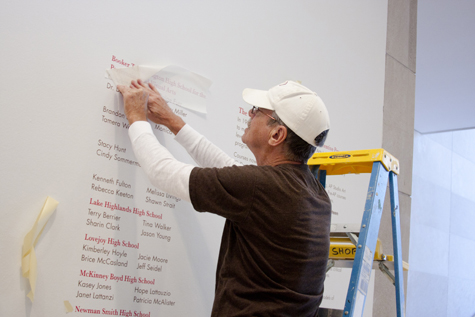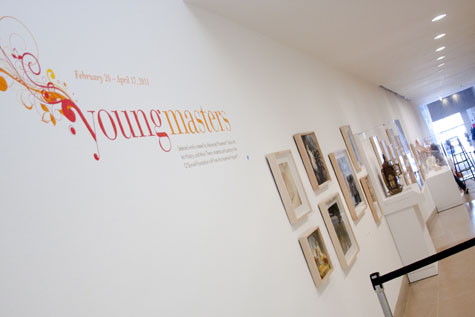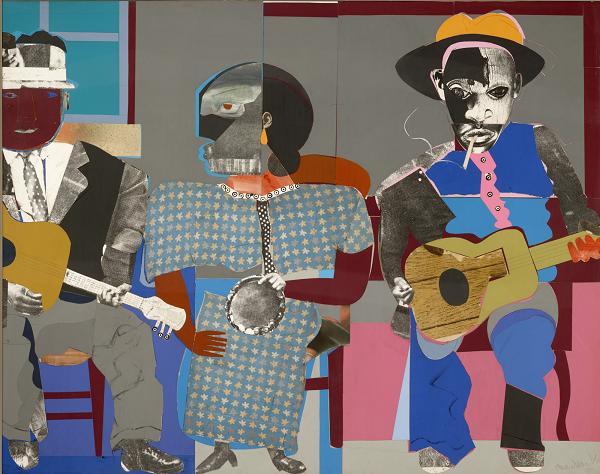What if the goal in looking at an artwork during a gallery experience wasn’t to learn everything about the object, or to arrive at “right ideas” about its meaning?
Interpretive Play, one of my favorite models of gallery teaching, is based on this idea. During an Interpretive Play experience, groups of visitors are guided by educators to look closely and make observations, “playing” with various possible interpretations and ideas about the artwork. Educators summarize, repeat, and connect visitor observations, weaving information into the conversation only as it is relevant to the group’s responses. The goal of the experience is to provide an opportunity for visitors to look, think, and wonder together, coming to a shared and unique understanding of the artwork.
Two of our wonderful interns, Jackie Lincoln, McDermott Education Intern for Family Experiences, and Haley Berkman, McDermott Curatorial Intern for Contemporary Art, led a gallery talk last Wednesday in the current Re-Seeing the Contemporary: Selected from the Collection based in Interpretive Play. They had a large group of participants and facilitated some meaty, dynamic conversations. Jackie, a frequent blogger on the We Art Family! The DMA Family blog has graciously agreed to share her insights about the gallery talk with us.
See Jackie’s comments below the slideshow of gallery photos and featured artworks.
[slideshow]
Haley and I are both planners by nature, so we spent a couple of weeks preparing for our gallery talk. We tried to prepare for all scenarios, leaving nothing up to chance.
We started our discussion with the painting Portrait and a Dream by Jackson Pollock, thinking that visitors might feel more comfortable discussing a work by an artist who might be more familiar to them. It was about two minutes into this discussion that I realized that the content of the conversation was largely out of mine and Haley’s control, and that it was up to the visitors to determine the course of the talk. It was a frightening moment for me, acknowledging that something that we spent so much time preparing for was in the hands of other people, but then, I took a deep breath and started to listen to what visitors were saying about the works of art. Many of the participants made observations about the works that Haley and I had not noticed before or brought up ideas or associations that we would have come up with on our own. I found that by listening to others’ ideas, I was gaining greater insight into the works, and I hope that the participants felt the same way.
Leading a group through an interpretive play exercise was much harder than I thought it was going to be, but it was also very rewarding. It was challenging guiding people through a new kind of gallery experience—an experience where they are actively participating instead of passively receiving information. Creating an environment where everyone feels comfortable sharing their observations and then finding a way to connect those (sometimes conflicting) observations is not an easy task for the facilitator. It was also challenging deciding when was the appropriate time to step away from a work or move on to a new topic or idea. However, I feel like with practice that many of these issues could be ameliorated.
Overall, this act should enhance their experience with a work of art and will hopefully make it more meaningful to them. It was interesting and inspiring to me that a single piece of artwork can mean so many different things to so many people, and I definitely plan on incorporating this technique into more of my classes in the future!
Jackie Lincoln
McDermott Intern for Family Experiences
Amy Copeland
Coordinator of Go van Gogh Outreach
















